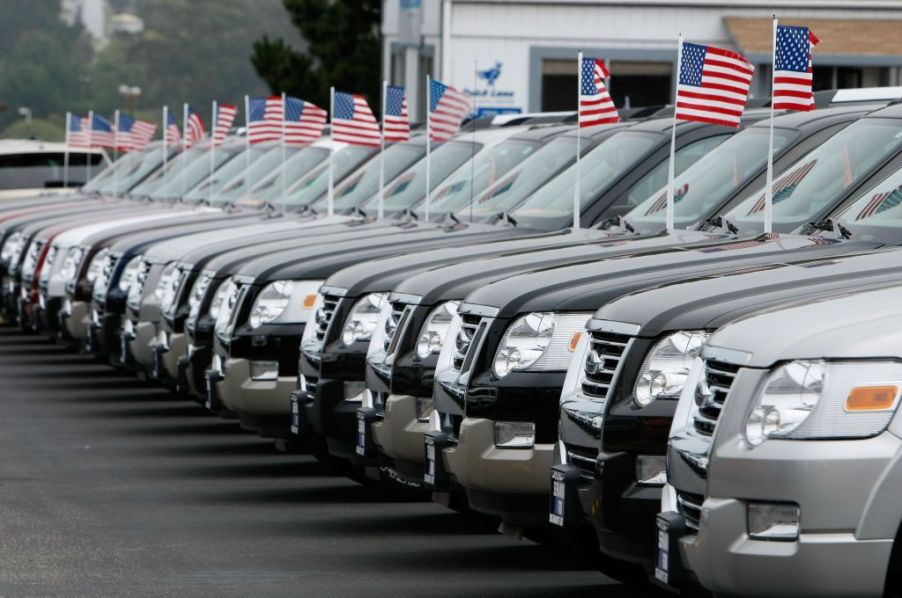
The Ugly Truth About Automakers’ Sales Numbers
It could be because of exorbitant sticker prices, but automobile sales are affected by economic fluctuations more than any other product. Stock drops and financial fears create a ripple effect that can halt production of an automobile model and sometimes wipe out entire lines. Automakers are in a constant struggle to keep sales numbers for every quarter as high as possible. For that reason, sometimes those numbers aren’t quite as straight forward as Americans think they are.
Third-quarter numbers
The Truth About Cars reported that across the board, third-quarter 2019 vehicle sales were down by at least 4%. Overall sales of new cars and light trucks were approximately 1,476,472 vehicles.
Overall car sales dropped by about 3%. Truck sales rose 11% and made up right around 54% of the market. Trucks made by Ford, GM, and Chrysler are the only vehicles that keep a consistent demand. General Motors goes neck-and-neck with the Ford F-150 with its Chevrolet Silverado and the GMC Sierra. Although Ford remains on top, GM is seeing strong sales despite the strike.
Retail sales
In retail sales to individual customers at dealerships, the numbers reflect which vehicles are truly popular with consumers. John Krafcik, president of TrueCar, the car-shopping service, told Automotive News, “Retail is where you see who is really performing well in terms of winning customers.”
But automakers don’t only rely on retail sales for actual numbers. Companies often use fleet sales to manage fluctuations in demand and to cover up weaknesses in certain product lines.
Fleet sales
There are two kinds of fleet sales. The “good” fleet sales are those that are the bulk sales to corporate and government customers. These customers provide an acceptable profit margin and tend to keep vehicles in service for two to three years. These sales have minimal impact on residual values and retail prices of cars.
The less desirable fleet sale is the rental fleet. Based on a report by Automotive News, about 10 years ago, automakers manufactured more cars than consumers were willing to buy.
Much of that excess was pushed into rental fleets. Those vehicles often remained in service only a few months before showing up at auctions and then onto pre-owned dealer lots. The eventual flood of slightly used cars pulled down the prices of new cars and diluted residual values.
Based on too much capacity, small and midsize cars are under pressure of going to fleet because consumers are not currently buying these products.
Should rental fleets be counted in overall sales?
Critics scorn rental fleet sales as one of the industry’s most destructive habits. However, rental lots remain a handy safety net, especially for slow-moving models. Although some manufacturers have cut car production, they still resort to rental sales to help absorb the non-sellable surplus.
This year, Ford was able to show a 1.5% increase in total sales by including a 3.5% rise in fleet sales. Filling orders from rental fleet companies can boost sales 18% in a single month. Commercial, government, and rental fleet sales accounted for 35% of total sales for Ford. That’s one percentage point more than a year ago.
GM, on the other hand, planned a reduction in sales to rental-car companies. Rental-car fleet sales were down 45% as GM trimmed rental sales in favor of more profitable retail and commercial business.
Fleet sales made up only 20% of sales for GM by June. That’s down 28% from a year ago. GM sold 70,166 full-size pickups mid-year, beating out Ford’s F-series sales by almost 15,000 units.
Those automakers that can balance business by using fleet sales, will probably continue to do that, despite what critics say. This means that the sales numbers that people see will continue to be skewed. Fleet sales are the dirty little secret behind sale numbers.


